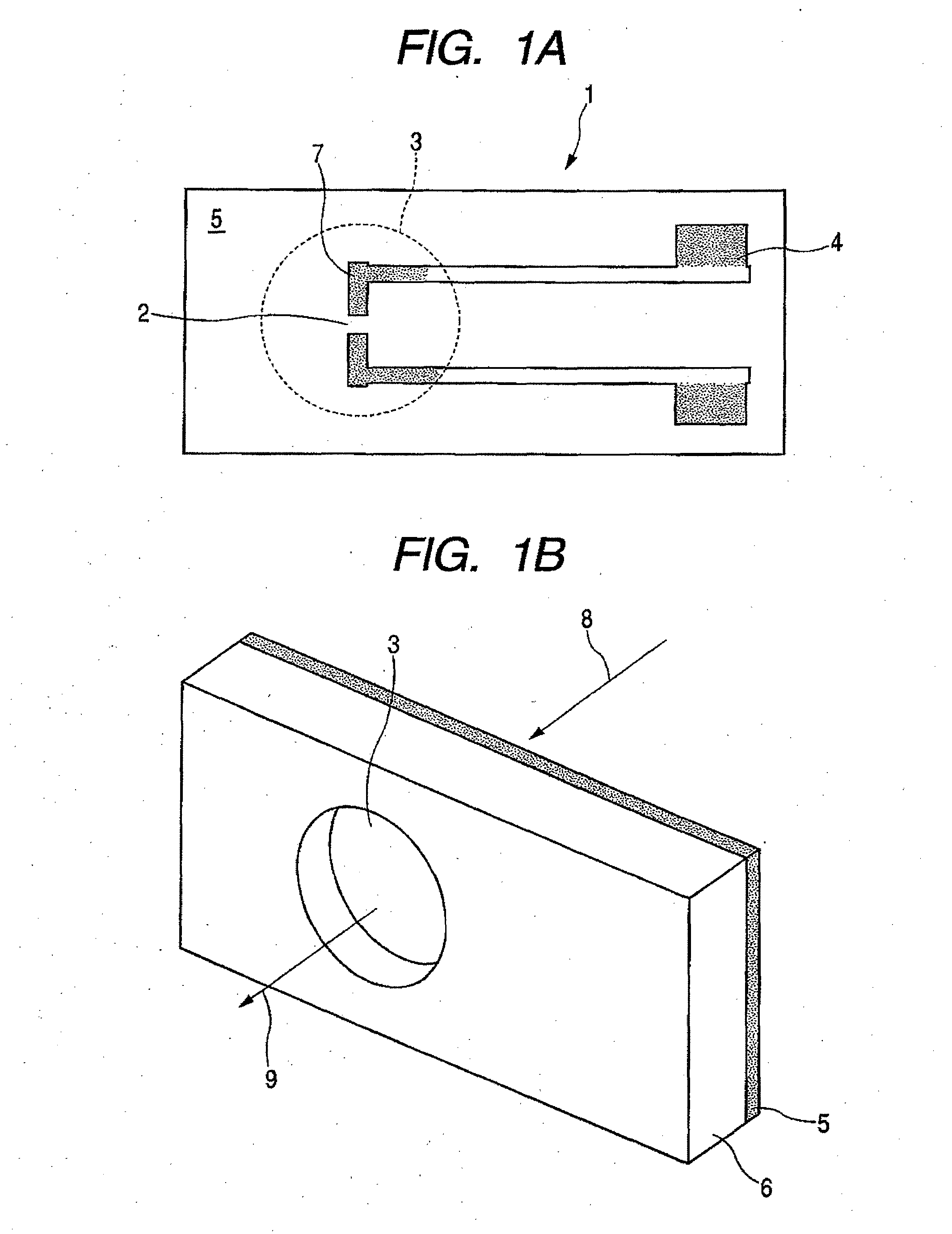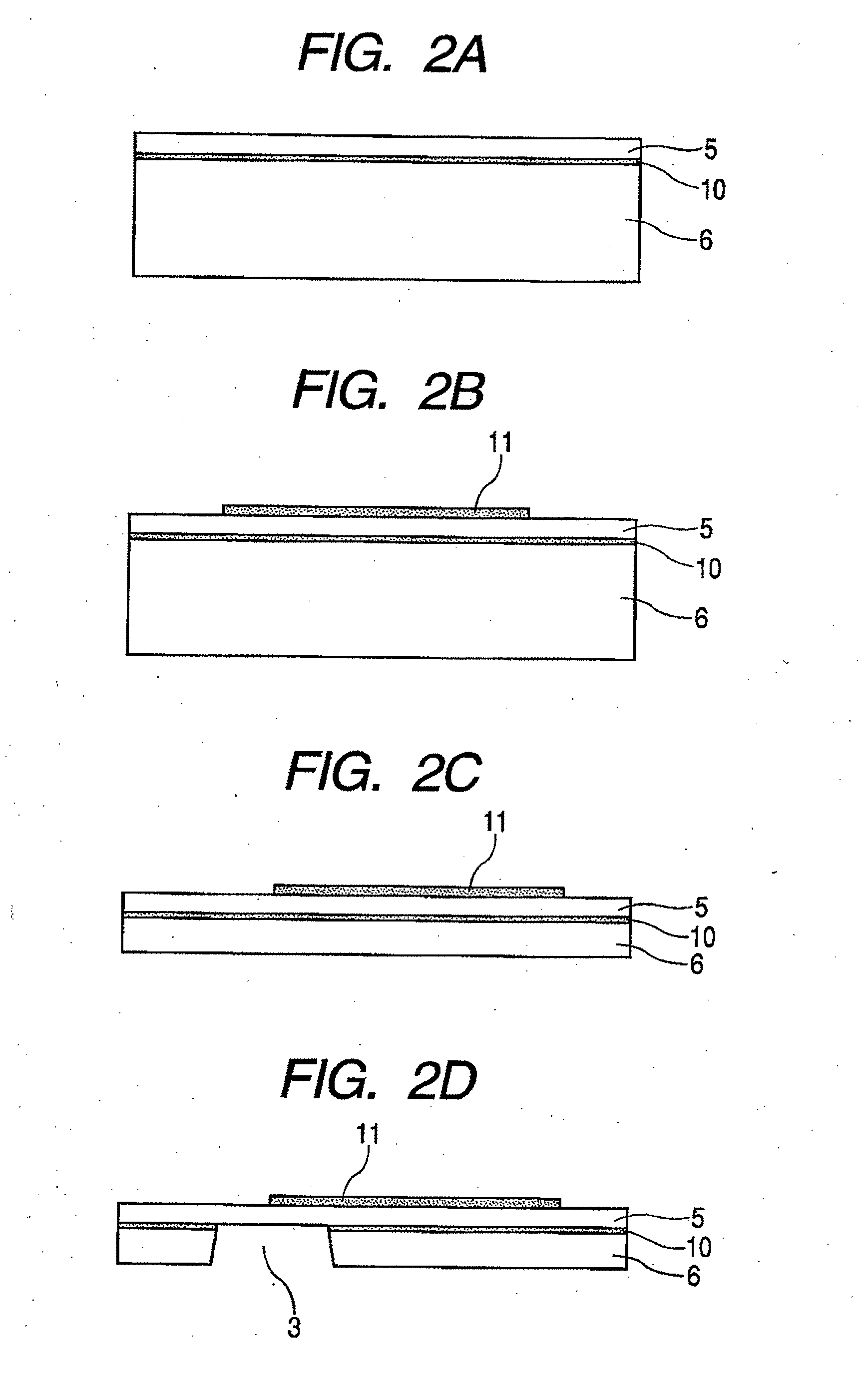Photoconductive Element and Sensor Device
a photoconductive element and sensor technology, applied in the direction of electrographic process, optical radiation measurement, instruments, etc., can solve the problem of reducing the efficiency of terahertz wave generation from the other side of the substrate, affecting the optical position, etc. problem, to achieve the effect of high efficiency
- Summary
- Abstract
- Description
- Claims
- Application Information
AI Technical Summary
Benefits of technology
Problems solved by technology
Method used
Image
Examples
embodiments
[0035]Examples of embodiments are described in detail below.
first embodiment
[0036]The first embodiment of the present invention is described with reference to FIGS. 1A and 1B. In a photoconductive element 1 according to the present invention, an epitaxial growth film 5 made of an AlAs layer (not shown) and a low temperature (LT) grown GaAs is formed on a semi-insulating (SI) GaAs substrate 6. An electrode 4 which serves also as a dipole antenna is formed on the surface of the LT-GaAs and about 5-μm gap portion 2 is located at the center of the antenna. Where, the AlAs layer is 0.1 μm in thickness and the LT-GaAs layer 5 is 2 μm in thickness. A dipole antenna formed in an antenna portion 7 is 30 μm in length. However, the numeric values and antenna shape are not limited to those stated herein. While a pair of the electrodes 4 and the antenna portion 7 are formed on the same plane as the epitaxial growth film 5 in the example illustrated in the figure, the epitaxial growth film may be interposed between a pair of the electrodes and the antenna portion to form...
second embodiment
[0051]The second embodiment according to the present invention is described below. FIG. 4 illustrates the second embodiment. The substrate 6 and the epitaxial layer 5 in FIG. 4 are the same as those in the first embodiment in configuration. In the present embodiment, a spherical, hemispheric or aspherical lens 12 is fitted into a hole (opening) made by removing the substrate to converge terahertz waves. Resin such as polyethylene, polyolefin or Teflon (trade name) or quartz may be used as a material for the lens. Hitherto, the existence of the substrate causes reflection due to a refractive index difference (for example, a difference between a refractive index of 3.5 of the substrate and a refractive index of 1.5 of a low refractive index material), so that it has been difficult to use a low refractive index material. However, the removal of the substrate allows a lens of a low refractive index material to be located in the vicinity of an electrode of a terahertz wave generating sou...
PUM
| Property | Measurement | Unit |
|---|---|---|
| thickness | aaaaa | aaaaa |
| thickness | aaaaa | aaaaa |
| length | aaaaa | aaaaa |
Abstract
Description
Claims
Application Information
 Login to View More
Login to View More - R&D
- Intellectual Property
- Life Sciences
- Materials
- Tech Scout
- Unparalleled Data Quality
- Higher Quality Content
- 60% Fewer Hallucinations
Browse by: Latest US Patents, China's latest patents, Technical Efficacy Thesaurus, Application Domain, Technology Topic, Popular Technical Reports.
© 2025 PatSnap. All rights reserved.Legal|Privacy policy|Modern Slavery Act Transparency Statement|Sitemap|About US| Contact US: help@patsnap.com



